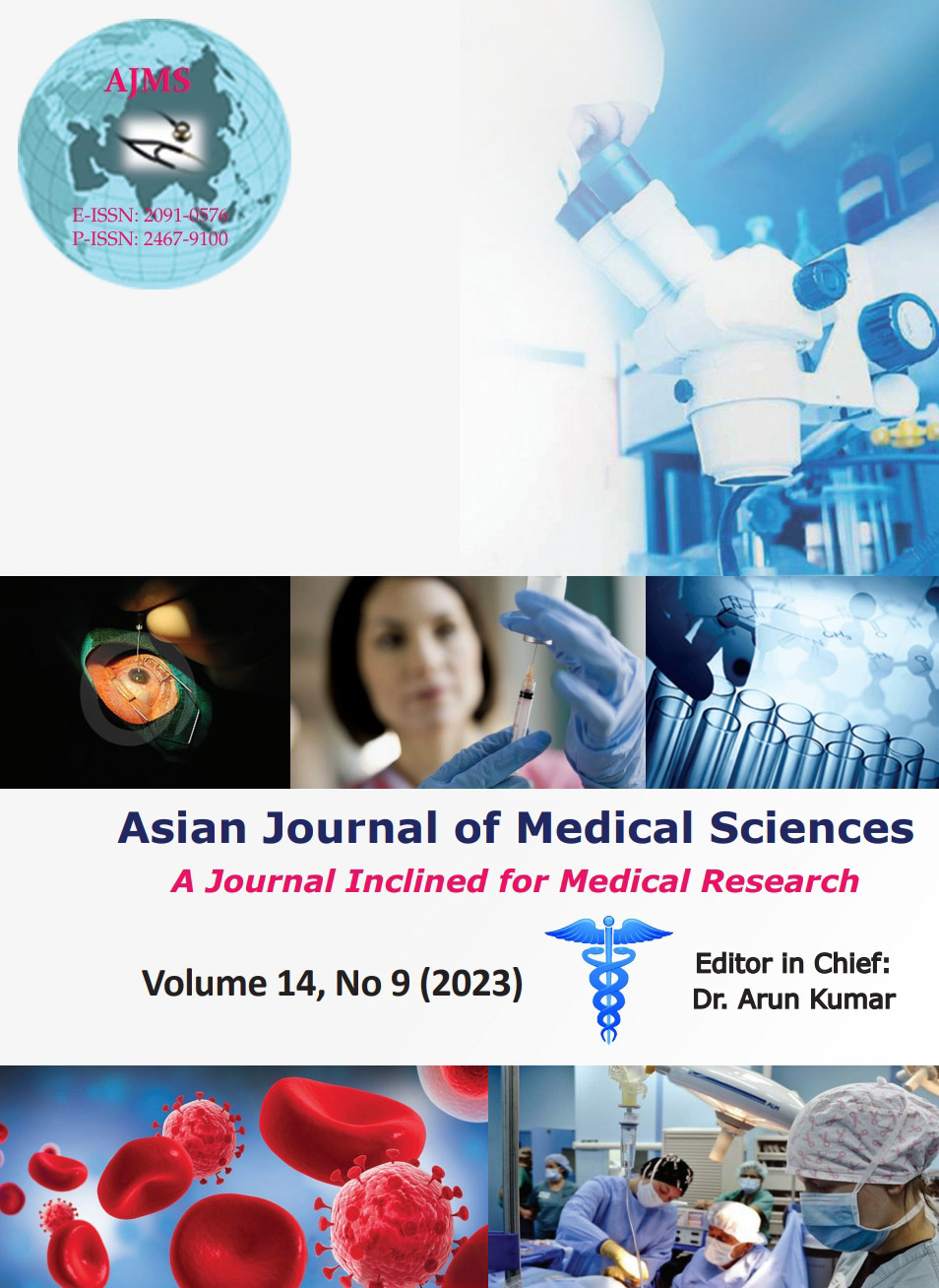Diagnostic utility of Risk of Malignancy Index in differentiation of benign from malignant ovarian masses
Keywords:
Ovarian tumor; Histopathology; UltrasonographyAbstract
Background: Women with adnexal masses still pose a diagnostic dilemma and require efficient triaging. The Risk of Malignancy Index (RMI) is an algorithm used for differentiation of malignant from benign ovarian masses.
Aims and Objectives: The present study aimed to evaluate the four indices RMI 1, RMI 2, RMI 3, and RMI 4 to discriminate a malignant ovarian tumor from a benign one.
Materials and Methods: This cross-sectional study was carried out at a tertiary care hospital of Eastern Uttar Pradesh, India, in 312 patients with ovarian masses. RMI scores were calculated based on pre-operative cancer antigen-125 levels, ultrasonography, and menopausal status followed by post-operative histopathology, taken as gold standard. Using cutoff points of RMI indices, the sensitivity, specificity, positive predictive value, and negative predictive value of RMI were assessed.
Results: Out of total 312 patients, 68 (21.8%) had malignant disease and 244 (78.2%) had benign pathology. All indices presented a significantly better performance in detecting malignancy than the use of a single parameter. Each of the RMIs had a different optimal threshold; however, using a threshold of 250, RMI 1, RMI 2, RMI 3, and RMI 4 had a sensitivity and specificity of 64.7%, 70.5%, 64.7%, and 65.2% and 93.4%, 83.6%, 90.2%, and 91.4%, respectively.
Conclusion: The RMI is a simple, composite tool that at lower values can reliably predict benign nature of adnexal tumors. However, at values above the cutoff points, it is helpful for appropriate surgical planning and averts radical surgeries in women of reproductive age group.
Downloads
Downloads
Published
How to Cite
Issue
Section
License
Copyright (c) 2023 Asian Journal of Medical Sciences

This work is licensed under a Creative Commons Attribution-NonCommercial 4.0 International License.
Authors who publish with this journal agree to the following terms:
- The journal holds copyright and publishes the work under a Creative Commons CC-BY-NC license that permits use, distribution and reprduction in any medium, provided the original work is properly cited and is not used for commercial purposes. The journal should be recognised as the original publisher of this work.
- Authors are able to enter into separate, additional contractual arrangements for the non-exclusive distribution of the journal's published version of the work (e.g., post it to an institutional repository or publish it in a book), with an acknowledgement of its initial publication in this journal.
- Authors are permitted and encouraged to post their work online (e.g., in institutional repositories or on their website) prior to and during the submission process, as it can lead to productive exchanges, as well as earlier and greater citation of published work (See The Effect of Open Access).




